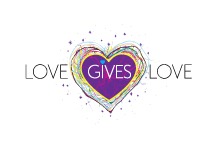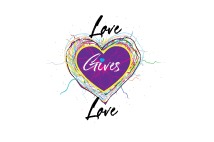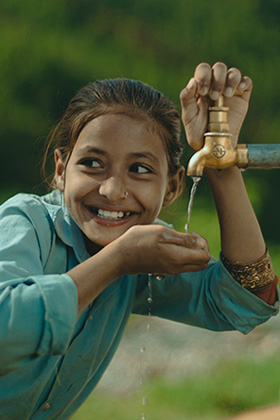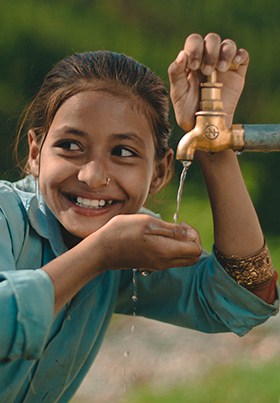This post was written by Sightsavers’ staff Moses Okipi, Edith Kagoya, Chris Iga and Tracy Vaughan Gough.
Neglected tropical diseases (NTDs) affect over one billion of the world’s poorest people. Sightsavers, with additional funding from the UK government, is helping to eliminate two significant NTDs: onchocerciasis (also known as river blindness) and lymphatic filariasis. Both are debilitating diseases caused by parasite infections.
Onchocerciasis is transmitted via the bite of a black fly and infection leads to severe skin disease with unrelenting itching and can lead to visual impairment and blindness. Lymphatic filariasis is transmitted via the bite of a mosquito and affects up to 120 million people. Long term infection with lymphatic filariasis can cause painful disability which can profoundly affect the lives of individuals, reducing their independence, productivity and mobility. The disfigurement and associated stigma and discrimination from infection can have a devastating impact on the affected, their families and their communities.
Sightsavers is committed to ensuring all our health programmes reach the most marginalised people. In Uganda, the team decided to find out how inclusive our NTD projects are already, and to identify key gender and disability issues that might need to be addressed in order to ‘leave no one behind’ (the commitment made by the Sustainable Development Goals 2015-2030).
In collaboration with the National Union of Women with Disabilities of Uganda, Sightsavers conducted consultations in Masindi District, Western Uganda. While the flies that transmit the disease have been eradicated in Masindi, many people in the area still have the parasites in their bodies. As a result the mass drug administration (MDA) has now been extended from 15 to 20 years. So, the assessment also sought to understand some of the barriers to achieving full MDA in relation to the inclusion and equitable participation of people with disabilities, women and marginalised groups.
For some of the people we spoke to in the villages of Nyabigoma and Nyakyanika, ivermectin, the treatment administered by Sightsavers’ partners to eliminate onchocerciasis and lymphatic filariasis, is seen as a wonder drug. [1]
But while there are perceived benefits that could be an added advantage in encouraging MDA participation, it is not the primary purpose and made clear to us that there were information gaps, which could be addressed through targeted quality health education in those locations. Some men and women (with and without disabilities) cited the drug, which the entire community takes twice a year, as responsible for aiding smooth childbirth, increasing stamina and being a cure-all for many sicknesses.
People we spoke to also noted that the locally recruited Community Directed Distributors (CDDs) were predominantly men. There were very few women; none were disabled and young people were also not represented. This is significant, because if we want to make sure that we access hard to reach groups like young men, we need to make sure they are also recruited as CDDs so they reach out to their peers, or that CDDs are aware that special efforts may be required to ensure those individuals are included.
The consultation was valuable as it highlighted the importance of ensuring that projects are designed with meaningful participation by all stakeholders. It is too easy to make assumptions if we do not really understand the realities of a particular community. Holding group discussions and taking time to talk to key individuals is a critical part of ensuring we deliver projects that really meet the project’s objectives and to supporting more inclusive project implementation that does not directly or indirectly exclude.
We have discussed the findings with the Ugandan Ministry of Health and are we are drafting an inclusion strategy. This will address some of these issues and hopefully make inclusion part and parcel of future programming.
This exercise is just one example of Sightsavers’ efforts to ensure that NTD programming is reaching all groups of people, starting with our new UK Aid Match programme on onchocerciasis/lymphatic filariasis elimination, which covers four countries in sub-Saharan Africa: Uganda, Nigeria, DRC and Guinea Bissau.
[1]An important part of our social inclusion strategic framework is to ensure that all our projects are inclusive of people with disabilities and gender-responsive. We decided to prioritise inclusive health, because these are our largest programmes and reach the most people and are where, we felt, we could make the most difference.





